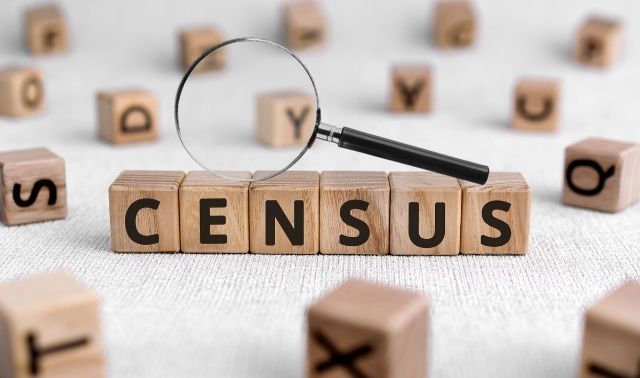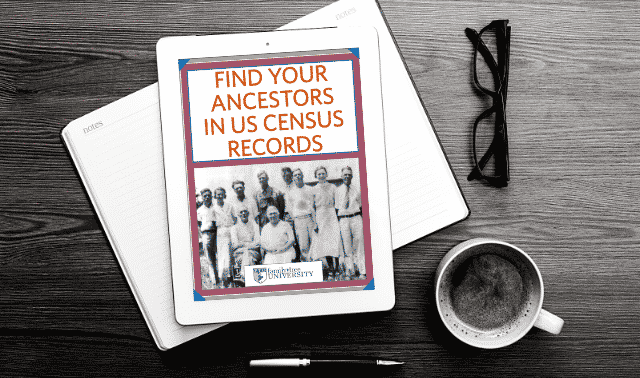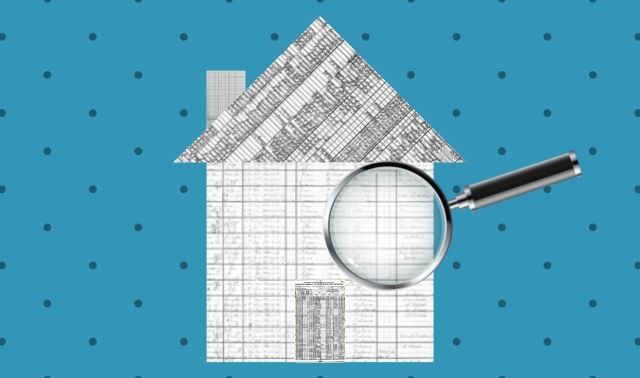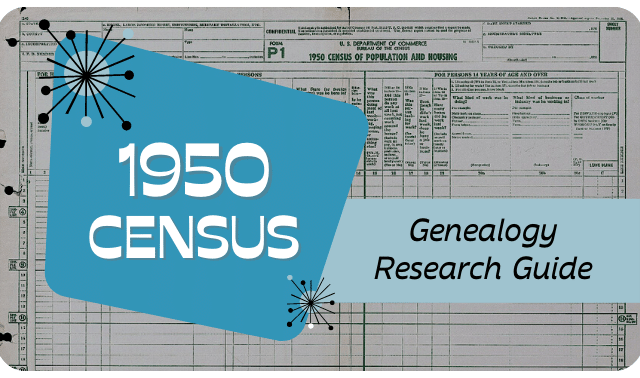Sign up for the Family Tree Newsletter Plus, you’ll receive our 10 Essential Genealogy Research Forms PDF as a special thank you!
Get Your Free Genealogy Forms
"*" indicates required fields
A friend once told me that her immigrant ancestor hadn’t become a naturalized citizen. She knew this because his US census entry in the citizenship column was NA—“not applicable.” Except that’s not what it means: In the census, NA actually stands for “naturalized.”
It’s an understandable mistake. Most census-taking codes, terminology and instructions aren’t explained on the forms listing your ancestor’s name, age and other details. Rather, instructions are tucked away in manuals given to census takers, or for early censuses, in Congressional orders. Of course, census takers didn’t always follow these directions to the letter. But knowing what each entry is supposed to mean gives you clues and context you can confirm elsewhere, and can help you avoid misinterpreting your ancestors’ information.
Ideally, you could study all the instructions yourself. They’re easily found online. But they’re lengthy: The 1930 manual alone runs 90 pages. And they’re eye-glazingly dull. Instead, use this guide as your own personal cheat sheet to those enumerator instructions. We’ve highlighted the census details, definitions and codes that shed light on subjects of most interest to genealogists: your ancestors’ family members, their immigrant experiences and their occupations.
Understand Family Structure
US censuses are staple records at nearly every major genealogy website: Ancestry.com, the free FamilySearch, Findmypast and MyHeritage. Censuses in 1880 and later are arguably your most valuable tool for reconstructing nuclear families.
Census population schedules have listed all household members by name since 1850. But in 1880, a key column was added: relationship to the head of household. This column defined how each household member was related to the person identified as the head of household.
The relationship designation is a little more nuanced than it first appears. The relationship applies only to the head of the household—not necessarily the spouse. So the son of a male head-of-household may actually be the stepson of his wife. And the relationship given may be more socially correct or emotionally true than biologically precise. So, a foster, adopted or stepchild may be identified simply as a “son” or “daughter.”
Understanding this will help you reconstruct families more completely and accurately. You may also become more attuned to additional census clues about the family size, previous marriages and specific relationships, such as:
Number of children
The 1890, 1900 and 1910 censuses ask women how many children they had borne and how many were living at the time of the census. (The 1890 census is lost except for fragments.) These figures may lead you to search previous censuses for older children, who may have aged out of the household. Also, according to the 1900 and 1910 census rules, stillborn children weren’t counted among total children born. The 1940 and 1950 censuses also had a question about the number of children borne, but only asked it of a sample portion of the population.
Years in current marriage
The 1900 and 1910 censuses asked husband and wife how many years they’d been married. The 1910 census clarifies that this number pertained only to the current marriage. In 1910, the marital status column was supposed to indicate a first marriage (“M1”) or a subsequent marriage (“M2”). The 1950 asked a small sample population about number of years since last marital status change, which could point you to marriage records, divorce records, or even death records.
Watch for other clues about a family’s structure, too. A child with a surname that’s different from the male head-of-household is likely a stepchild—and a clue to look for the wife’s prior marriage to a man with the child’s last name. If the ages of a wife and child differ by less than about 15 years, you have a hint that the wife may be a younger stepmother. Gaps larger than two years between children might be due to a gap between marriages or unaccounted-for children who died in infancy. If a head of household has grown children (or a teenage daughter), very young children listed in the household may be grandchildren. Mismatched parents’ birthplaces are another clue that children are stepchildren: The head-of-household’s birthplace might be Maryland, but the child’s own entry might list her father’s birthplace as Virginia.
As you compare census entries across time for the same family, apparent inconsistencies might be explained by a more-complicated family structure. A wife who appears under a slightly different name or who ages inconsistently may actually be more than one person. (Inconsistent ages, though, are common in the census, so look for evidence of the husband’s multiple marriages.) A child claimed as a son in the 1920 census may be more precisely identified as a stepson in 1910.
Pre-1880 censuses, although lacking a “Relationship to Head of Household” column, also can provide clues to family structure. In 1850, 1860 and 1870, census enumerators were to list father and mother first, then “the oldest child residing at home, then the next oldest, and so on to the youngest, then the other inmates, lodgers and boarders, laborers, domestics and servants.” If the enumerator followed instructions, the order and ages of household residents may be hints.
Before 1850, the census recorded each household on a single line with only the head-of-household’s name. Other family members appear just as tick marks in columns for gender, age range, and free or slave status. Educated guesswork and correlation with other sources can help you turn those tick marks into names and relationships.
In 1860 and before, enslaved people aren’t named at all in censuses. Before emancipation, they were identified by tick marks in the slaveholding household (before 1850) or in separate slave schedules for several states (1850 and 1860). Because enslaved relatives often were separated and parents were rarely fully identified in historical records, it can be difficult to reconstruct entire nuclear African American families.
Identify Immigrant Ancestors
Beginning in 1850, the census requested birthplace information for each person, which can help you identify immigrant ancestors. Whether parents were of foreign birth appears in 1870, and parents’ birthplaces appear in 1880.
Later censuses note immigrants’ year of initial arrival (1900–1930) and country of origin (1900–1950). But before rushing off to search for related records in the Old Country, you’ll want to know precisely what US census information on immigrants means.
Birthplaces
Unfortunately, non-US birthplaces are usually identified only at the country level. The following exceptions may help you better understand what you see on a relative’s census entry:
- Beginning in 1890, census enumerators distinguished between French and English Canadian origins. You may see this noted as Canada—French or Canada (Fr.).
- In 1930, enumerators were instructed to define all non-French-speaking Canadian-born as Canada-English, “even though they may not actually speak English.”
- In 1920 and 1930, Cuban and Puerto Rican birthplaces were specified instead of the more generic West Indies.
- In 1930, Irish birthplaces were divided into Northern Ireland and Irish Free State. (You may see these categories in other censuses, too.) Also in 1930, for Native Americans, the father’s birthplace column was instead used to note the degree of Indian blood and the mother’s birthplace column noted the person’s tribal affiliation.
More-detailed instructions were given for German birthplaces as early as 1860 and beginning in 1900 for Austria, Hungary, Bohemia, Russia, Poland, Finland, Turkey, Bulgaria and Lithuania. It’s best to check the census enumerator instructions for those years and places. Find instructions for all years on the US Census Bureau website. The Minnesota Population Center, University of Minnesota has transcribed instructions for 1850 to 1950.
Naturalization
The naturalization column—the one that tripped up my friend with the “Na” notation—first appeared in the 1890 census. The three possible codes here are “Na” (naturalized), “Pa” (“papers,” for those who’d filed a declaration of intention to naturalize), and “Al” (“alien,” for those of foreign birth who hadn’t started the naturalization process). In 1940, a fourth code appeared for naturalization: “Am Cit,” for a child born overseas or at sea to US citizens. The 1950 census had a simple Yes/No response for naturalization; enumerators were to write “AP” if the person was born abroad to American parents.
Only foreign-born males age 21 and over answered the naturalization question in 1900 and 1910. Beginning in 1920, all foreign-born responded. Interestingly, a married woman was required to report the same citizenship status as her husband even if she was born in the United States. (Until 1922, an immigrant woman derived her naturalization status from her husband. Between 1907 and 1922, a woman born in the United States lost her citizenship if she married an alien.) Children under 21 reported the same status as their parents. These instructions changed somewhat in the 1930 census. Check the enumerator instructions for more details on those changes. In 1920 only, you’ll find the person’s year of naturalization (or a parent’s, if a child derived citizenship from a parent’s application).
These clues may point to additional records, such as passenger arrival lists, naturalization records and, in the 1940s, alien registrations. Knowing whether someone applied for citizenship (and even what year) can help you know whether searching for naturalization records may be worth the effort.
Discover Occupations
One of the most revealing pieces of information in some census years is an individual’s occupation. If you know what your great-grandfather did for a living, you can often research what kinds of skills he likely had, the discomforts or even dangers he may have faced on the job, and his relative standard of living and social standing in the community.
The 1820 and 1840 censuses include questions about how many household members were engaged in broad categories of occupations (you may need to turn to the second page of the census form to see these categories). The 1850 census was the first to associate a profession, occupation or trade with individual household members over the age of 15. Census-takers were instructed to record occupations clearly and distinguish between the employer and the employed. A farm owner was a farmer; his hired hands were farm laborers. The employer was a “master” mechanic or “master” carpenter, as opposed to his employees. Individuals learning trades were recorded as apprentices. Family members being paid for domestic duties were termed servants or domestics.
If your ancestor was a clergyman, you may even find the denomination in the occupation census column. Once you know what you’re looking at, the abbreviations may seem obvious: “Meth”=Methodist; “R.C.” = Roman Catholic; “O.S.P.” = Old School Presbyterian; “P.E.” = Protestant Episcopal. That church affiliation may lead you to church records or histories. It may hint at a certain set of beliefs, lifestyle, social standing and more.
The 1870 census instructions declare occupation to be “one of the most important questions of this schedule.” Nineteen paragraphs describe how to–and how not to—identify occupations, including distinctions between artisans and factory workers. For example, those who earned the moniker of jewelers, shoemakers or bootmakers in the census crafted products from scratch in a small shop. Those who helped mass-produce items were factory workers. Of particular interest if you’re researching female ancestors, the term “housekeeper” applied only to paid workers. A woman “keeping house” was taking care of her own house full-time. Other subtle but potentially important instructions appear for later censuses. Some examples:
- In 1880, occupations were listed for all the gainfully employed above age 10 (down from 15). There’s also a column for number of months employed during the census year; in 1890, that question was reversed to ask about the number of months unemployed.
- According to the 1900 census instructions, individuals who worked more than one job could report either the occupation which produced the most money or the one in which more time was spent. Enumerators could use only approved abbreviations; otherwise, they had to write the occupation name in full. Most of those abbreviations are intuitive. Others may be helpful to mention, such as trav. for traveling and telph. for telephone.
- Enumerators could override a person’s description of his occupation if it did not describe the occupation according to instructions.
Related to occupational information is census data about a person’s wealth and education. The 1850, 1860 and 1870 censuses collected data on the value of a person’s real and/or personal property. Beginning in 1890, you’ll find questions on home ownership and (in 1930 and 1940) even the value of the home.
Schooling and literacy are assessed in a variety of censuses, too. My mom knew her maternal grandfather Thomas Hall when she was a child. She recalls helping her Grandpa Hall with yard work and hearing his childhood stories. She assumed he at least received an eighth-grade education, perhaps higher. But the 1900 census reveals that by age 12, Thomas Hall was already employed as a farm laborer with four months of unemployment over the past 12 months (probably accounted for by the four months of schooling reported for him).
The 1900 census instructions required that children who were “appreciably assisting in mechanical or agricultural industry” at home be designated as farm or other laborers. By contrast, Thomas’ 11-year-old sister was “at school,” with no occupation listed. Her description fits the census instructions for children over 10 who regularly attended school and just helped with family chores “out of school hours;” they were not to be assigned an occupation.
Thomas Hall was the oldest of seven children in a Missouri farming family. Many other boys over 10 who appear near him in the census were also farm laborers who attended school from 0 to 4 months. So his work status doesn’t appear to have been unusual for that time and place. How long he continued to attend school while working nearly full time for his father is unknown.
For some census years, special agricultural and manufacturing census schedules also were taken. These can supply additional details about an ancestor’s work and wealth. Unfortunately, the agricultural schedule on which Thomas’ father would have appeared no longer exists. Understanding what those notations in censuses are really saying about your ancestors can point you to new records and give you a truer picture of their lives.
A version of this article appeared in the December 2017 issue of Family Tree Magazine. Last updated in September 2022 to reflect the 1940 and 1950 censuses.
Related Reads
ADVERTISEMENT










